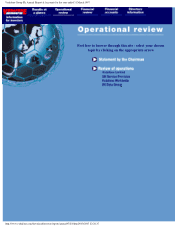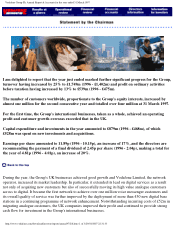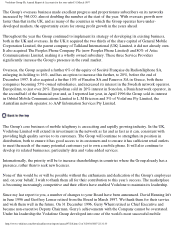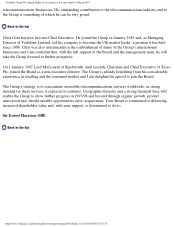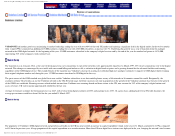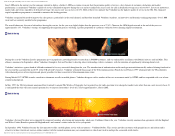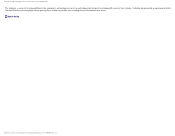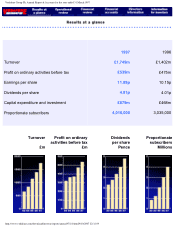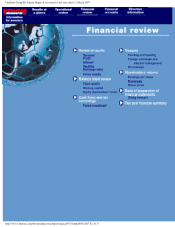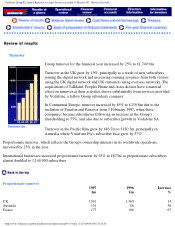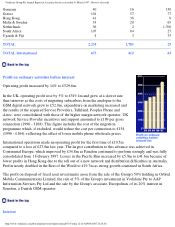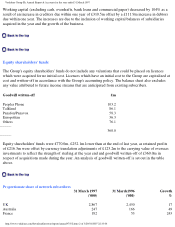Vodafone 1997 Annual Report Download - page 5
Download and view the complete annual report
Please find page 5 of the 1997 Vodafone annual report below. You can navigate through the pages in the report by either clicking on the pages listed below, or by using the keyword search tool below to find specific information within the annual report.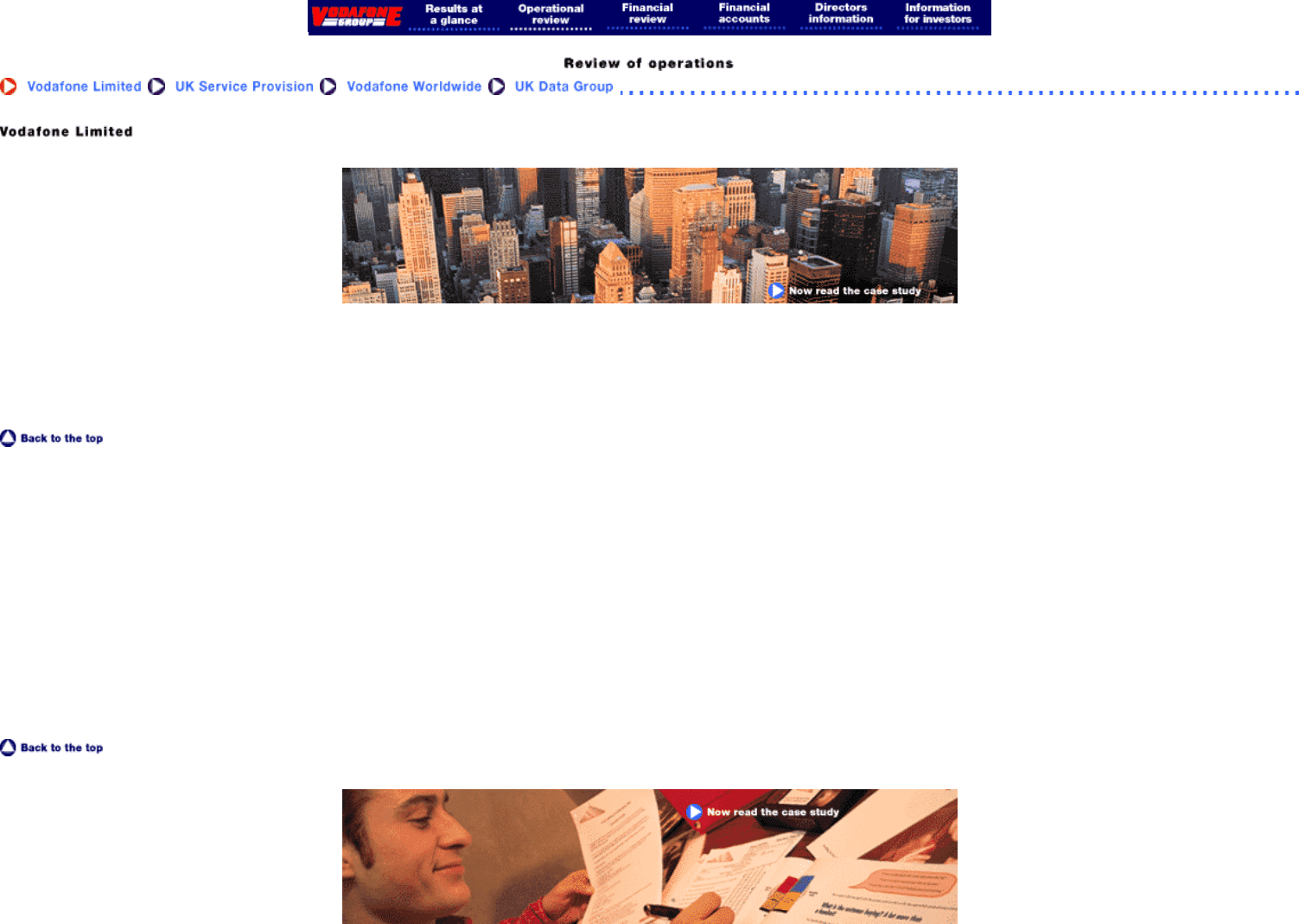
Vodafone Group Plc Annual Report & Accounts for the year ended 31 March 1997
VODAFONE had another good year, maintaining its market leadership, ending the year with over 40% of the total UK market and enjoying a significant lead in the digital market. In the twelve months
from 1 April 1996 it connected an additional 415,000 customers, ending the year with 2,867,000 subscribers, an increase of 17%. Underlying this growth was a year of transition from the analogue
network to the GSM digital network. At the beginning of the year, 521,000 customers subscribed to the company¹s digital services and by the end of the year the number had grown to 1,478,000,
representing 52% of the company's total customer base.
The transition was in two parts. First, at the start of the financial year, new connections to each of the networks were approximately equal but, by March 1997, 85% of new connections were to the digital
network. This change was encouraged by new tariffs with one second billing and inclusive calls, a reduction in digital hand-set prices and a growing demand for the advanced facilities and roaming
capabilities of the GSM digital service. The second element of the transition was Vodafone's strategy of assisting its established high user analogue customers to migrate to GSM digital whilst retaining
their original telephone number and, during the year, 317,000 customers transferred to GSM digital in this way.
The great success of the GSM standard on a global basis now enables Vodafone subscribers to use their mobile phones on any of 86 networks in 56 countries around the world. Reciprocally, the
customers of those 86 networks can use the Vodafone network in the UK. Network usage, therefore, increases not only in proportion to the growth of the Vodafone customer base but also to the growth
of the GSM base worldwide. Roaming revenues which include income from Vodafone users roaming abroad and from visitors to the UK, now account for 24% of the company's digital airtime and
access revenues. UK visitor income approximately doubled in the last year.
Average revenue per customer for the financial year was £427, with revenue from digital customers of £558 and analogue users £353. On a gross basis, adding back Service Provider discounts, the
average per customer would have been £564 for the year ended 31 March 1997.
The popularity of Vodafone's GSM digital network and growth in call traffic in the UK has necessitated an increase in capital expenditure which, in the year to 31 March, amounted to £179m, compared
to £155m in the previous year. A large proportion of this capital expenditure was on infrastructure. More than 430 new digital base stations were deployed in the year, bringing the network's total to more
http://www.vodafone.com/download/investor/reports/annual97/2/2.htm (1 of 3)29/03/2007 22:31:43

